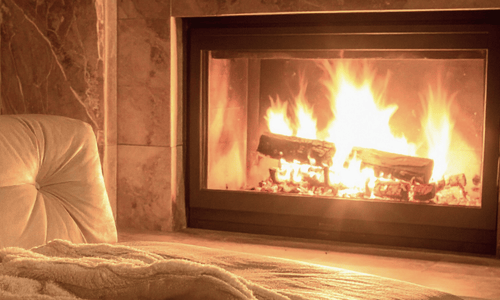Inside the inspection
Fire safety
When it comes to keeping a home safe, few things are as critical—or as often overlooked—as fire safety. Beyond the obvious presence of smoke detectors, there are several built-in systems and components that play a key role in protecting your home and family. Drawing from years on the frontlines as a Georgetown firefighter, Ross brings a unique perspective to this part of the inspection. He’s not just checking boxes—he’s evaluating the home the way a first responder would.
What Impacts a home’s Fire Safety
A standard house inspection and a rent-ready inspection both cover a range of fire safety elements designed to detect and slow the spread of fire. Here’s what that typically involves:
Smoke Alarms: Inspectors look for the presence and proper placement of alarms inside each sleeping room, outside sleeping areas, and on every level of the home. Each unit is tested using the built-in button to confirm basic functionality.
Fireplaces and Chimneys: A visual inspection of the firebox, damper, flue, and chimney structure helps identify hazards like cracks, missing chimney caps, or creosote buildup—any of which can increase fire risk.
Gas Lines and Shut-Offs: For homes with gas appliances, inspectors verify that shut-off valves are accessible and look for signs of leaks or corrosion. Functional shut-offs are essential in an emergency.
Egress Windows and Escape Routes: Bedrooms are checked for proper egress windows or doors that allow safe escape if a fire blocks the primary exit.
Kitchen appliances: Home inspectors look for proper installation and clearances around stoves, ovens, and vent hoods, as well as functioning range exhaust systems.
Carbon Monoxide Alarms: In homes with fuel-burning appliances or attached garages, inspectors confirm that carbon monoxide detectors are present in the correct locations.
Beyond the Basics
This is where Ross’ background as a firefighter adds real value. Over the years, he’s seen how seemingly small issues can make a major difference in an emergency. For example:
Aging Smoke Alarms: Many homeowners don’t realize that smoke alarms have a 10-year lifespan. Ross checks manufacturing dates and flags outdated units that may no longer provide reliable protection.
Improper Detector Placement: Detectors installed too close to kitchens, bathrooms, or HVAC vents may lead to nuisance alarms or reduced effectiveness. Ross often spots these subtle placement problems.
Obstructed Exits: Storage in attics or secondary bedrooms sometimes blocks egress windows, turning an otherwise safe space into a hazard during a fire.
His firefighter’s eye often catches issues that others might miss—not because they’re technically outside the inspection scope, but because he understands how homes behave under fire conditions.
Why It Matters in the Austin Metro
While fire safety matters everywhere, our hot, dry seasons and frequent use of gas appliances make the Central Texas fire risk different from other regions. A well-placed, working smoke alarm can be the difference between a close call and a devastating loss.


